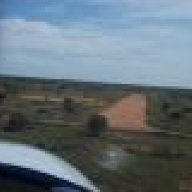Great topic but I can add a few things here, from personal experience. Search and rescue work is nearly always conducted in remote, rugged and unforgiving terrain and on nearly every occasion I have been involved with, the weather has been terrible.
Search and rescue work is not easy. Searching by air is not just flying around looking for people on the ground. Even with a spotter on the ground it is physically very demanding and draining on both the pilot and spotters. Anyone who has searched intensively for someone in even moderately timbered areas will tell you that after about 15 mins your eyes start playing tricks on you and you need to be acutely aware of the spatial disorientation effects. One up in a trike or other smaller craft would be very demanding on the pilot, not even taking into account the terrain, conditions etc at the time. To effectively search by air, you have to be trained and be aware of the numerous issues effecting your body and mind when doing it.
The risk management issue is the greatest factor though. It is normal to enquire very early on in the notification, for any available commercial pilots/aircraft to assist with a search. Money, contrary to general belief, is generally not the issue because funding is sourced through AUSSAR, locally and at a state level. Usually there are available a/c and pilots in most parts of Australia. This is now a requirement under Emergency Management planning to have these details on hand to be used in an emergency. Yes, an R22 may be cheaper to run, but in a densely vegetated valley, at low level when the burner stops I'd rather be in a twin engined Bell 412 which is why EM outfits go with twin engined machines.
Commercial pilots are generally used due to their training standard being recognised and the a/c used being maintained to a known standard. Most search and rescue a/c will also be fitted with self activating emergency beacons and the necessary radios etc to be in contact with a forward command post and able to take instructions etc from ground controllers. Yes, there is a belief, that I don't agree with, that 'light' a/c fall out of the air 'all the time' and this will always play on the overall coordinator who will weight up having someone something missing, and then possibly a light a/c also involved in the search.
Yes, you may be able to just jump into your trike and fly out to the search area and find whoever is missing, and don't get me wrong, you may be of use in a particular situation, but there are a lot of dangers to be aware of and in particular a number of human factors areas that especially effect people involved in searching for another human being. I believe that to take part in SAR activities, there would need to be some formal recognition/training in the following areas-
- Search and Rescue Activities Awareness (covering search methods/radio use/grid patterns/briefings etc)
- Low level flight endorsement
- Maintenance release for a/c used
- emergency beacon
- Human factors attributable to SAR activities
The human factors area is incredibly important. When it comes to helping another human in trouble, we instinctively jump in to assist and quite often disregard other safety considerations. HF is the difference between someone who has an aircraft which may be overdue for a service volunteering instead of declaring that their a/c is u/s. It's the drive that keeps a pilot up beyond daylight conditions when they aren't rated, puts them below LSA, into and behind hills susceptible to wake turb/rotor etc, making inappropriate turns to check something out, using an aircraft that is low on oil, disregarding instructions from coordinators. I know some of these sound silly but I've seen them all.
The trouble is, to do it safely there would need to be a recognised 'standard' to ensure that emergency services could call on smaller a/c to assist, but is that just inhibiting the quick availability of an asset that may be available quickly?


